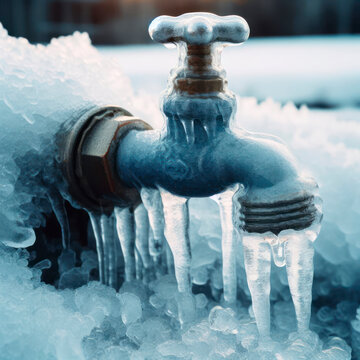Ways to Protect Pipes from Freezing: Specialist Advice
Ways to Protect Pipes from Freezing: Specialist Advice
Blog Article
What're your ideas on How to prepare your home plumbing for winter weather?
:strip_icc()/snow-outdoor-faucet-pipes-4af65d1e5e904fb1aa7bf74071fe5d89.jpg)
Cold weather can ruin your pipes, especially by freezing pipes. Below's just how to stop it from happening and what to do if it does.
Introduction
As temperatures decline, the risk of icy pipes increases, potentially resulting in expensive fixings and water damages. Comprehending exactly how to prevent icy pipes is vital for home owners in cold environments.
Avoidance Tips
Insulating prone pipelines
Cover pipelines in insulation sleeves or use warm tape to secure them from freezing temperatures. Focus on pipes in unheated or outside areas of the home.
Heating methods
Keep indoor rooms sufficiently heated, particularly locations with pipes. Open up closet doors to permit warm air to flow around pipelines under sinks.
How to determine frozen pipelines
Look for decreased water circulation from faucets, unusual smells or noises from pipes, and noticeable frost on exposed pipes.
Long-Term Solutions
Architectural adjustments
Think about rerouting pipes far from exterior wall surfaces or unheated locations. Include additional insulation to attics, cellars, and crawl spaces.
Upgrading insulation
Purchase high-grade insulation for pipelines, attics, and walls. Appropriate insulation aids maintain regular temperature levels and reduces the danger of frozen pipelines.
Safeguarding Outdoor Plumbing
Yard pipes and exterior faucets
Separate and drain yard pipes before wintertime. Install frost-proof faucets or cover outside taps with protected caps.
Comprehending Icy Pipelines
What causes pipelines to ice up?
Pipes ice up when exposed to temperature levels listed below 32 ° F (0 ° C) for prolonged periods. As water inside the pipes ices up, it expands, taxing the pipeline walls and potentially causing them to burst.
Threats and damages
Icy pipelines can lead to water supply disruptions, home damage, and costly repair work. Burst pipes can flood homes and trigger comprehensive structural damages.
Signs of Frozen Piping
Recognizing frozen pipelines early can prevent them from breaking.
What to Do If Your Pipes Freeze
Immediate actions to take
If you presume frozen pipes, keep faucets open to alleviate stress as the ice melts. Utilize a hairdryer or towels taken in hot water to thaw pipes gradually.
Verdict
Avoiding frozen pipes needs aggressive actions and fast feedbacks. By recognizing the reasons, indications, and preventive measures, house owners can safeguard their pipes throughout cold weather.
5 Ways to Prevent Frozen Pipes
Drain Outdoor Faucets and Disconnect Hoses
First, close the shut-off valve that controls the flow of water in the pipe to your outdoor faucet. Then, head outside to disconnect and drain your hose and open the outdoor faucet to allow the water to completely drain out of the line. Turn off the faucet when done. Finally, head back to the shut-off valve and drain the remaining water inside the pipe into a bucket or container. Additionally, if you have a home irrigation system, you should consider hiring an expert to clear the system of water each year.
Insulate Pipes
One of the best and most cost-effective methods for preventing frozen water pipes is to wrap your pipes with insulation. This is especially important for areas in your home that aren’t exposed to heat, such as an attic. We suggest using foam sleeves, which can typically be found at your local hardware store.
Keep Heat Running at 65
Your pipes are located inside your walls, and the temperature there is much colder than the rest of the house. To prevent your pipes from freezing, The Insurance Information Institute suggests that you keep your home heated to at least 65 degrees, even when traveling. You may want to invest in smart devices that can keep an eye on the temperature in your home while you’re away.
Leave Water Dripping
Moving water — even a small trickle — can prevent ice from forming inside your pipes. When freezing temps are imminent, start a drip of water from all faucets that serve exposed pipes. Leaving a few faucets running will also help relieve pressure inside the pipes and help prevent a rupture if the water inside freezes.
Open Cupboard Doors
Warm your kitchen and bathroom pipes by opening cupboards and vanities. You should also leave your interior doors ajar to help warm air circulate evenly throughout your home.

I'm very serious about 6 Ways to Prevent Frozen Pipes and I hope you enjoyed reading the new article. If you appreciated our blog entry if you please make sure you remember to pass it around. We thank you for your readership.
Get A Quote Report this page